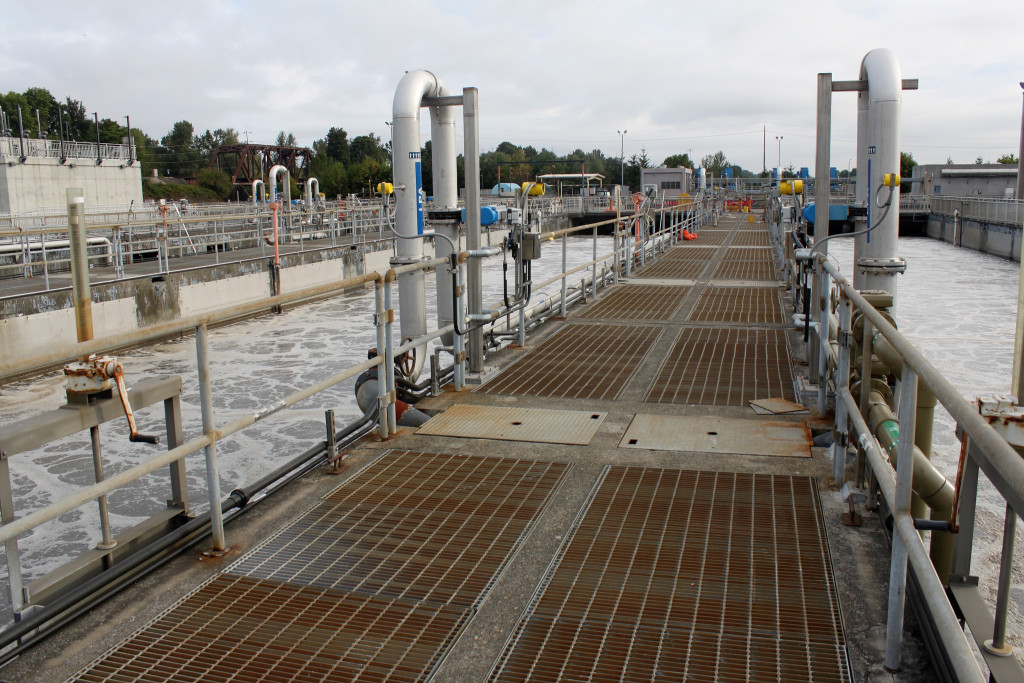
Water system operators know that the buildup of biological and mineral deposits in a water system is unavoidable. Because of this issue, operators use multiple chemicals, such as disinfectants, sequestering agents, and scale inhibitors to ensure the safety of the water consumers receive while managing the impact of deposits in distribution systems. However, balancing the use of chemicals with the quality of water can be challenging.
Water Treatment Chemicals and DBPs
Although water treatment chemicals serve a clear purpose, some also produce disinfection byproducts, such as chlorite, bromate, haloacetic acids and trihalomethanes. Regulated by the Environmental Protection Agency DBPs are proven to cause cancer in some cases. Since October 2013, all public water utilities have been required to comply with the EPA Stage 2 Disinfectant and Disinfection By-Products Rule. These requirements mandate maximum averages for trihalomethanes and haloacetic acids, the leading disinfection byproducts while maintaining a chlorine residual of 0.2 mg per liter without exceeding chlorine dosage of 4.0 mg per liter at any point in the distribution system.
Controlling DBP Formation
Water entering a water distribution system after treatment is rarely above the maximum limit for DBPs. Thus, most DBPs that contaminate water form in the distribution system when the disinfectant continues to interact with the organic matter in “finished” water and with organic deposits and growth in the pipes. Because of the formation of scale and biofilms within the system, high levels of disinfectants may be required in order to maintain water quality. Unfortunately, increased usage of these chemicals leads to increases in DBP formation. Fortunately, advanced cleaning products like Clearitas® deposit control can reduce the need for chemicals and eliminate some of the problems they cause while still maintaining the quality of the system’s water.
Reducing DBPs with Clearitas
Clearitas is the stable patented product of an advanced electrochemical chlor-alkali process that removes both inorganic and organic deposits from water distribution systems by oxidizing the most stubborn biofilm and scale. It works in conjunction with traditional disinfectants, enhancing their effectiveness. Through breaking down and removal of scale and biofilms, which can harbor pathogenic and non-pathogenic bacteria that can be dangerous, affect taste and odor, consume residual disinfection, and decrease the overall quality of water, Clearitas is a unique and effective enhancement to any water system chemical plan and will help reduce distribution system-generated DBPs.
Clearitas Reduces The Amount Of Disinfectants Needed for Water To Be Safe
Because Clearitas enhances the effectiveness of traditional disinfectants that have already been added to the water distribution system by removing organic deposits in the distribution system and therefore a significant contributor to disinfectant “demand”, water distribution system operators can reduce the dose of disinfectant and eliminate other chemicals to keep water safe for consumers.
Clearitas Reduces The Need For Remediation
Likewise, because Clearitas addresses the issue of biofilms and scale, disinfectant demand and corrosion are reduced and scale is eliminated. Thus, operators are less likely to be forced to add additional chemicals for remediation.
Clearitas Doesn’t Increase Corrosivity
Clearitas can effectively remove mineral deposits from water without changing its corrosivity. Clearitas also removes iron and manganese bacteria tubercles, eliminating a significant source of corrosion. This leads to a lower demand for scale and corrosion inhibitors.
Clearitas Lowers The Production Of DBPs
Because Clearitas reduces the organic deposits in the distribution system that interacts with disinfectants and reduces the amount of disinfectant required to meet residual requirements, water distribution systems that use Clearitas will also enjoy lower concentrations of DBPs. This reduces safety concerns and simplifies compliance with EPA regulations.
Other Benefits
In addition to eliminating contaminants and reducing the need for chemicals in water distribution systems, Clearitas also improves the overall quality of water. It is a liquid, non-hazardous, NSF 60 certified drinking water additive. If you are interested in understanding if Clearitas can assist with your water treatment regimen, contact Blue Earth Products to learn more.
DOWNLOAD GETTING TO KNOW CLEARITAS
Photo credit: eliduke / Source / CC BY-SA
Sources: http://www.epa.gov/enviro/html/icr/gloss_dbp.html
https://blueearthproducts.com/wp/wp-content/uploads/2014/04/BlueEarthLabs_ScienceOfClearitas_2-1.28.14.pdf
http://water.epa.gov/drink/contaminants/basicinformation/disinfectants.cfm

